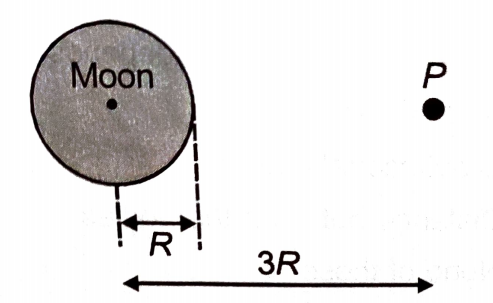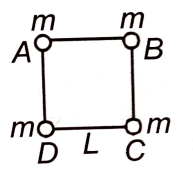If R is the radius of earth and g is the acceleration due to gravity on the earth's surface, then mean density of the earth is:
1.
2.
3.
4.
The value of g at the surface of the earth is 9.8 m/s2. Then the value of 'g' at a place 480 km above the surface of the earth will be nearly (radius of the earth is 6400 km):
1. 9.8 m/s2
2. 7.2 m/s2
3. 8.5 m/s2
4. 4.2 m/s2
If the change in the value of 'g' at a height 'h' above the surface of the earth is the same as at a depth x below it, then: (x and h being much smaller than the radius of the earth)
1.
2.
3.
4.
As we go from the equator to the poles, the value of 'g':
1. Remains the same
2. Decreases
3. Increases
4. First increase and then decrease
What should be the angular speed with which the earth has to rotate on its axis so that a person on the equator would weigh th as much as he weighs at present?
1.
2.
3.
4.
The acceleration due to gravity on a planet is 1.96 m/s2. If it is safe to jump from a height of 3 m on the earth, the corresponding height on the planet will be:
1. 3 m
2. 6 m
3. 9 m
4. 15 m
An object is taken to height 2R above the surface of the earth, the increase in potential energy is: [R is the radius of the earth]
1.
2.
3.
4.
The change in potential energy when a body of mass m is raised to height nR from the earth's surface is: (R is the radius of the earth)
1.
2.
3.
4.
A stationary object is released from a point P at a distance of 3R from the centre of the moon which has radius R and mass M. Which of the following gives the speed of the object on hitting the moon?

1.
2.
3.
4.
Four particles A, B, C and D, each of mass m, are kept at the corners of a square of side L. Now the particle D is taken to infinity by an external agent keeping the other particles fixed with their respective positions. The work done by the gravitational force acting on the particle D during its movement is:

1.
2.
3.
4.






